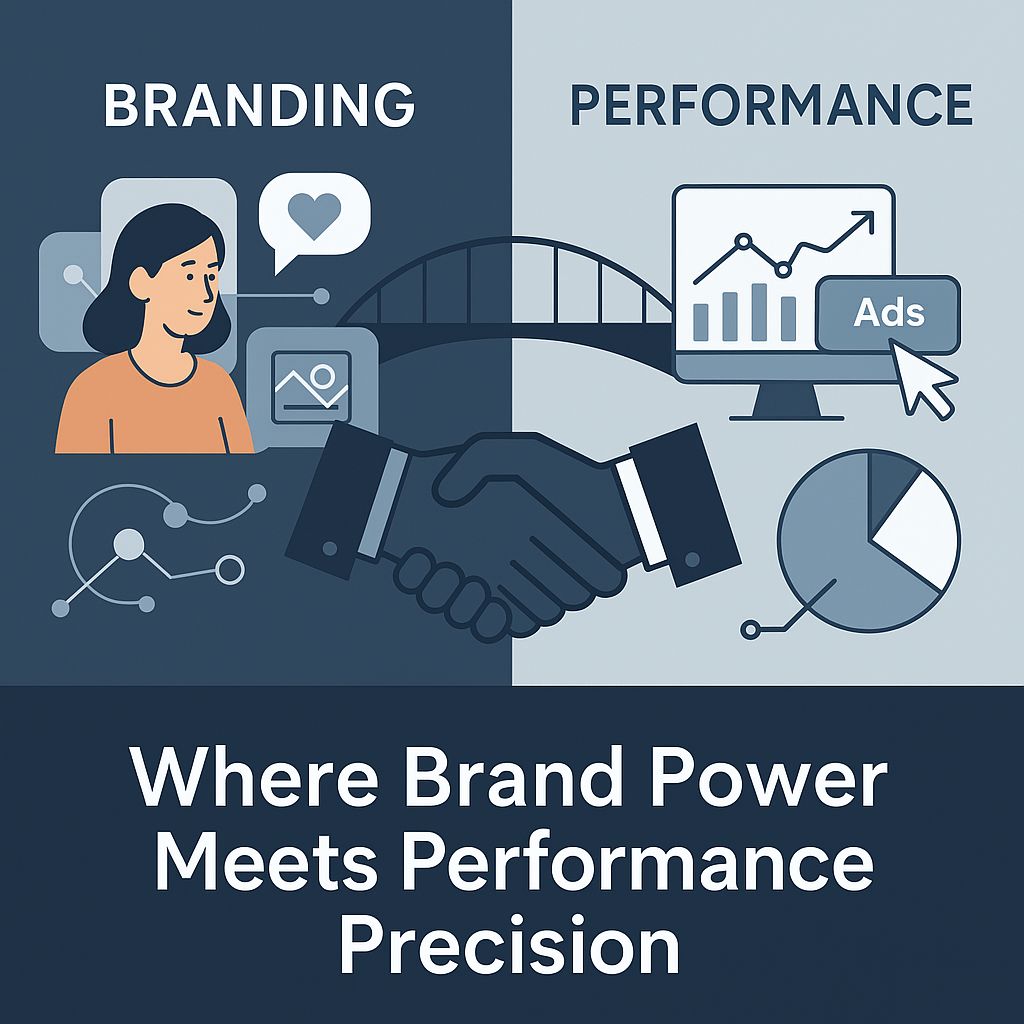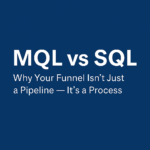Brand-Led Performance Marketing
In today’s ever-evolving digital landscape, marketers are under increasing pressure to deliver results now. Impressions, clicks, conversions, ROAS — the metrics don’t lie. But while performance marketing shines in its ability to drive measurable outcomes, there’s another, quieter force at play — branding.
It’s not a question of either/or. The smartest marketers know this: true growth happens when branding and performance marketing work in sync.
Having worked across both global powerhouses and agile local startups, I’ve witnessed the magic that happens when long-term brand building meets short-term performance hustle. If you’re a founder, a CMO, or a growth marketer looking to scale meaningfully, this article is your bridge between the two worlds.
Let’s break down why brand-led performance marketing isn’t just a trend — it’s the future of marketing.

The False Dichotomy: Branding vs Performance
Marketers often view branding and performance as two opposing approaches:
- Branding is about emotion, memory, consistency, and long-term value.
- Performance is about immediacy, measurement, optimization, and ROI.
It’s easy to pit them against each other. Branding is “slow” and hard to quantify. Performance is “aggressive” and data-driven.
But the reality? That’s an outdated mindset. The two are not enemies — in fact, they need each other.
Why Branding Still Matters in a Performance-Obsessed World
You can have the most optimized ad campaign in the world — perfect bidding strategy, killer CTA, brilliant targeting — and still fail to convert.
Why? Because people don’t just buy products. They buy trust, familiarity, and identity. They buy brands.
1. Branding Builds Memory. Performance Activates It.
Most customers don’t convert the first time they see your ad. Or the second. Or even the fifth.
What nudges them to click “Buy Now” or sign up after days or weeks of exposure? Memory. Trust. Familiarity. If your brand has been consistently presented in the market, your performance campaigns don’t operate in isolation — they trigger stored emotional and visual cues that already exist in the customer’s mind.
2. Performance Needs a Trust Layer to Work
In a world flooded with ads, users are more skeptical than ever. Your ad might have a high CTR, but if the landing page screams “generic,” or if your brand lacks a clear identity, conversions will tank.
Performance marketing without brand depth often results in wasted budget. You might win attention, but you won’t hold it.
3. Branding Isn’t Fluff — It’s Strategic Infrastructure
Clear brand purpose, tone of voice, and visual identity create a cohesive customer experience. They make every touchpoint — from a Facebook ad to an onboarding email — feel intentional.
Strong brand guidelines empower performance teams to build campaigns that are not only optimized for clicks, but also aligned with what the brand truly stands for.
The Power of Integration: Brand-Led Performance in Action
So what does successful integration look like in real life?
Let’s look at a few key principles that help bridge the gap.
🔹 Start with Brand Clarity
Before launching performance campaigns, ensure your brand fundamentals are strong:
- What’s your value proposition?
- What pain points do you solve?
- What tone do you speak in?
- Why should someone trust you?
This clarity shapes the narrative behind your performance creatives, landing pages, and customer journey flows.
🔹 Creative Drives Conversion
Ad fatigue is real. Customers are exposed to thousands of messages daily.
You need scroll-stopping creatives that aren’t just clickbait, but emotionally resonant and on-brand. Even a 15-second Instagram ad should feel like a micro-story that echoes your brand’s identity.
🔹 Data + Storytelling = Modern Marketing
Data tells you what’s working. Storytelling tells the customer why it matters.
Branding provides the storytelling. Performance provides the feedback loop. Together, they create campaigns that are both memorable and measurable.
A data-only approach often lacks soul. A story-only approach lacks scale. The blend? That’s your marketing sweet spot.
Real-World Example: Brand-Led Performance in DTC
Consider a direct-to-consumer (DTC) skincare brand launching a new face serum.
- Without branding: They might run conversion ads pushing discounts, using generic benefits like “hydrating” or “anti-aging.” Even if they get clicks, the brand is forgettable, and LTV remains low.
- With brand-led performance: They launch with a positioning around “Confidence in Skin,” create storytelling reels from real customers, align influencer collabs with brand values, and then run performance ads using UGC, testimonials, and branded creatives that echo this message.
The result? Higher engagement, better ROAS, and most importantly — lasting brand equity.
Branding & Performance: Not Just Handshake Partners, But Growth Multipliers
Here’s why brand-led performance is the smartest way forward:
| Branding | Performance |
|---|---|
| Builds emotional connection | Drives measurable outcomes |
| Increases lifetime value | Increases immediate ROI |
| Differentiates in crowded markets | Capitalizes on market attention |
| Creates consistency across channels | Enables precise targeting & retargeting |
When these elements work together, they don’t just add up — they compound.
5 Actionable Tips to Integrate Branding and Performance
Ready to bridge the gap in your own marketing strategy? Here’s how to start:
1. Audit Your Brand Foundations
Is your positioning clear? Are your visuals and messaging consistent? If not, fix the foundation before scaling campaigns.
2. Align Creative with Conversion Goals
Work closely with your creative team to develop assets that are not only beautiful but built for performance.
3. Retarget Using Brand Stories
Don’t just retarget with offers. Use behind-the-scenes, founder stories, or customer journeys to deepen engagement.
4. Measure More Than Clicks
Track brand lift, search volume, direct traffic, and customer feedback. Not everything valuable is immediately trackable in a dashboard.
5. Test & Learn, But Stay On-Brand
Experimentation is great — but don’t chase trends that dilute your brand. Stay true to your identity while optimizing.
Final Thought: Don’t Just Sell. Connect.
In a world where every brand is trying to shout louder, the ones who win are those who speak clearly and connect deeply.
Performance marketing gets people through the door. Branding ensures they remember you, trust you, and come back.
So if you’re building a marketing strategy in 2025 and beyond, don’t ask “Brand or Performance?”
Ask: “How can my brand guide performance?”
Because growth isn’t just about transactions — it’s about relationships. And that’s where branding and performance truly shake hands.
Frequently Asked Questions (FAQs)
Q1. What is brand-led performance marketing?
A: Brand-led performance marketing is a strategy that integrates brand building with performance campaigns. It combines emotional storytelling, brand identity, and trust with data-driven tactics like paid ads, retargeting, and conversion optimization to drive both short-term results and long-term growth.
Q2. How is brand-led performance marketing different from traditional performance marketing?
A: Traditional performance marketing focuses primarily on immediate results like clicks, leads, or purchases. Brand-led performance marketing goes a step further by embedding brand values, visual identity, and messaging into every touchpoint, ensuring better customer recall and higher long-term ROI.
Q3. Why is branding important for performance marketing success?
A: Branding builds trust, familiarity, and emotional connection. These factors significantly influence a customer’s decision to convert. Even the most optimized ads won’t perform well if the brand lacks credibility or a distinct identity.
Q4. Can small businesses apply brand-led performance marketing strategies?
A: Absolutely. Even with limited budgets, small businesses can clarify their brand voice, use storytelling in ads, and ensure consistent visuals. This enhances performance efforts by making campaigns more relatable and memorable.
Q5. What are some examples of brand-led performance marketing tactics?
A: Examples include running paid ads using user-generated content, using consistent brand colors and tone across all campaigns, retargeting using brand stories, and creating landing pages that reflect brand values alongside clear CTAs.
Q6. How do I start integrating branding with my performance campaigns?
A: Start by auditing your brand identity — purpose, voice, visuals — then build performance creatives aligned with those elements. Collaborate with both creative and media teams to ensure messaging consistency across the customer journey.
For regular updates on marekting tactics for B2C, D2C or B2B marketing follow me on Linkedin.
For more such interesting blog posts on Digital Marketing follow Popnewsblend.

Hi, I’m Prashant Jain — a curious soul, storyteller, and content creator at heart.I’ve always been drawn to the world of entertainment, travel, sports, health & lifestyle — not just as a writer, but as someone who genuinely lives these experiences. Whether I’m binge-watching the latest OTT series, exploring offbeat spiritual destinations in India, or diving deep into wellness routines and cricket match insights, I love sharing what I discover with like-minded readers.
PopNewsBlend is my way of blending personal journeys with meaningful stories — ones that inform, inspire, and keep you ahead of the curve. Everything I write comes from real observations, hands-on experiences, and a deep passion for understanding the world around us.
Discover more from Popnewsblend
Subscribe to get the latest posts sent to your email.








Pingback: How Short Video Trends Have Transformed Consumer Behaviour in 2025